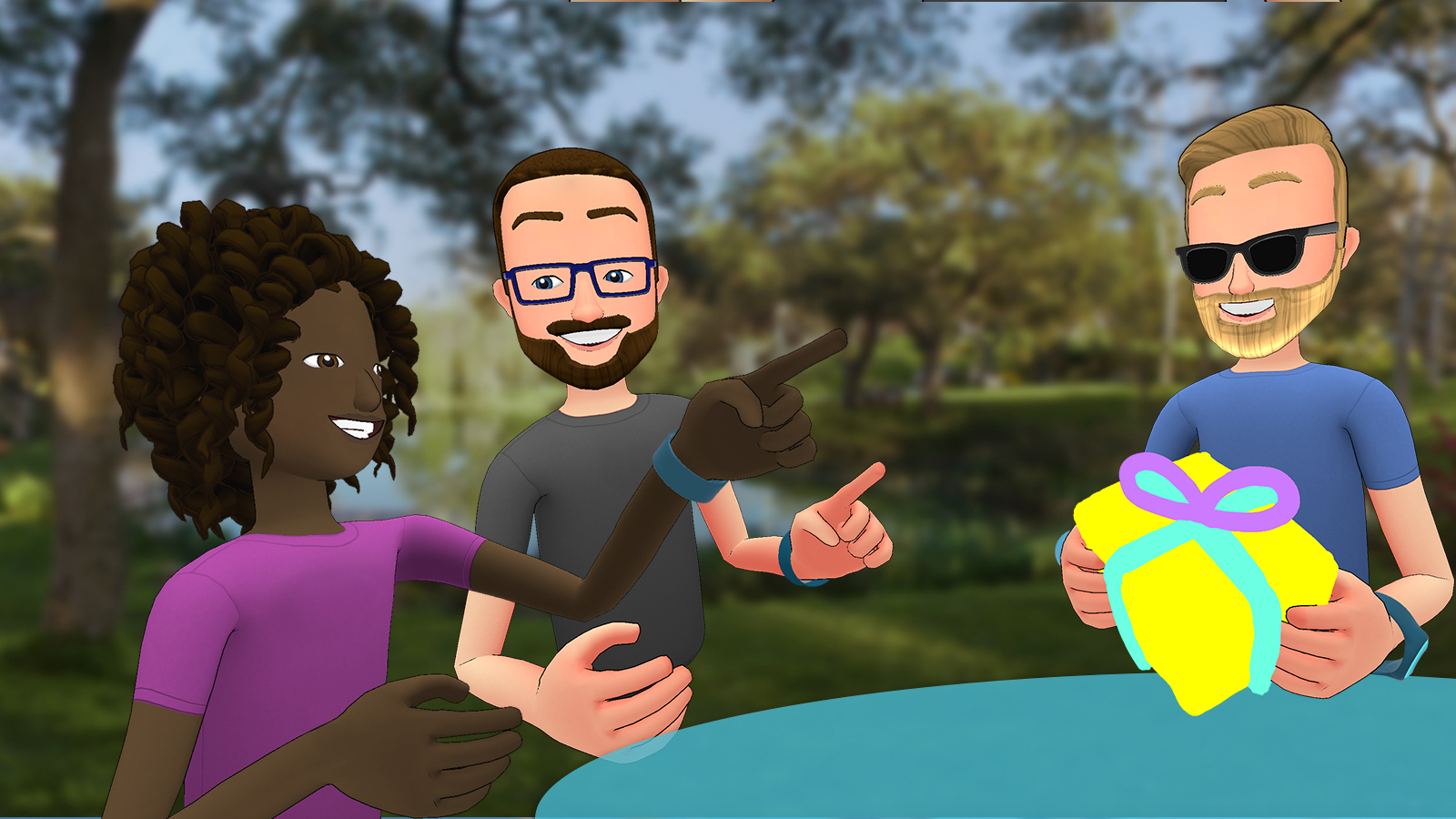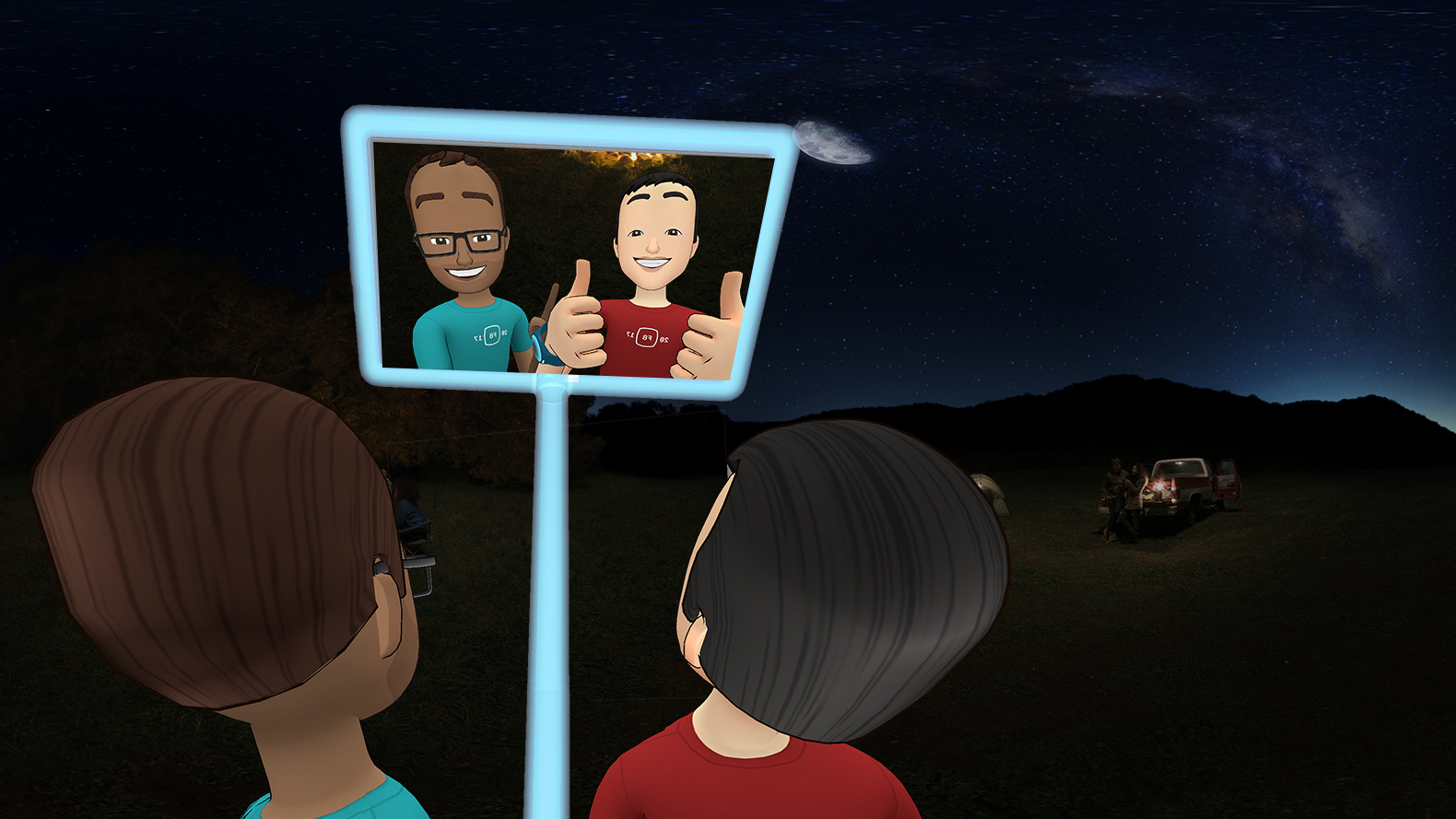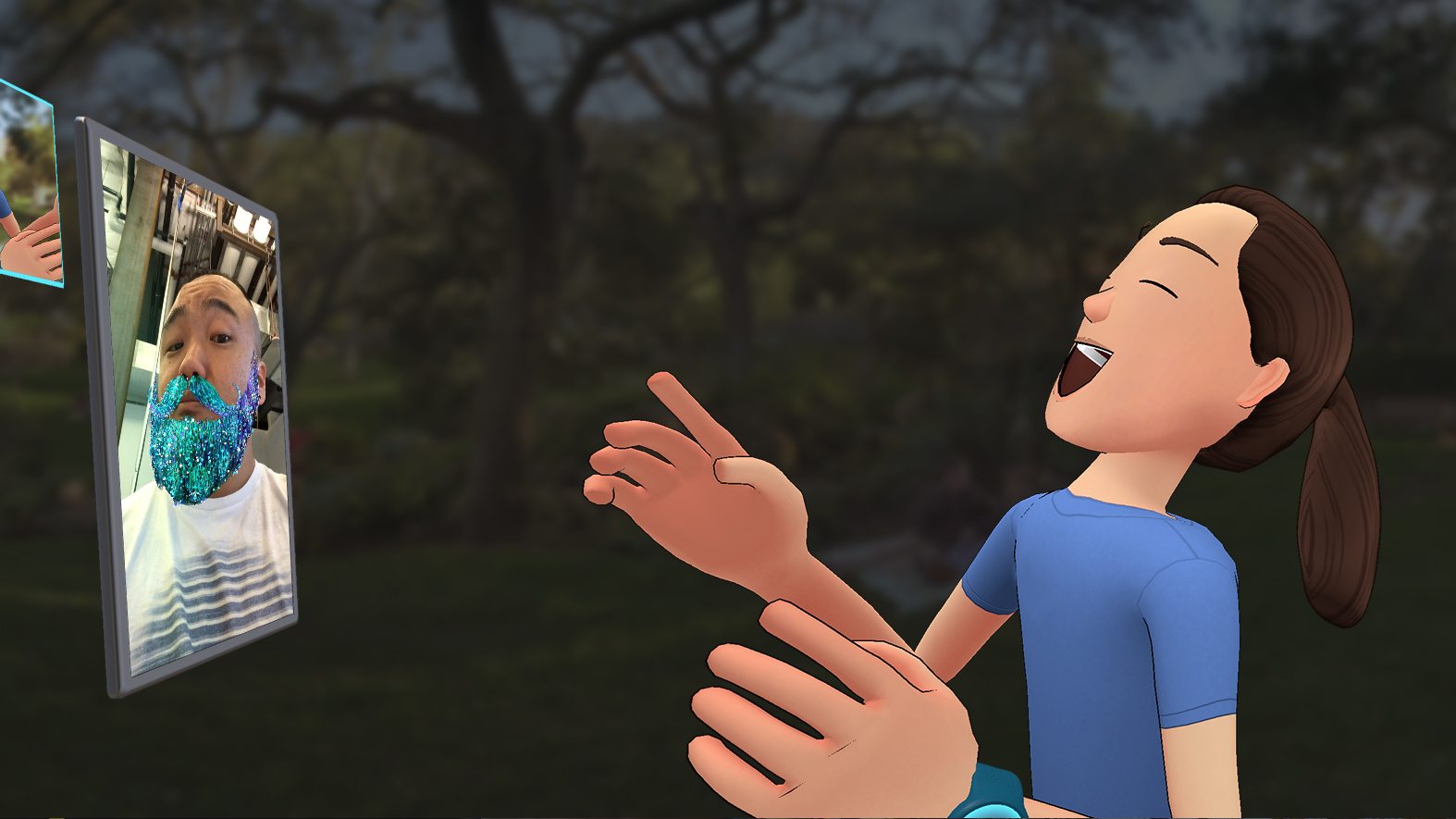If you were confused as to why Facebook spent a whopping $2.3 billion to buy Oculus, the company’s latest product makes the acquisition a little clearer.
At F8, Facebook’s annual developer conference, the company took the wraps off “Facebook for Virtual Reality,” officially titled Spaces. Spaces is a way for people to interact with friends in virtual reality, whether they’re in the other room, or half-way across the world.
Social avatars
You begin the experience by creating an avatar. If you’ve ever created a Nintendo Mii, the experience is very similar. Log in to your Facebook account, and you’ll be asked to choose a photo as a base for the avatar. The selection of photos for us was a little limited, but the service will create an avatar based on the photo you choose. If it doesn’t get your looks right, you can customize bits and pieces to your liking, such as eye color, eyebrow shape, chin shape, and so on.
Spaces is a way for people to interact with friends in virtual reality.
One of the cool things about Spaces, as opposed to other virtual reality experiences, is that it’s built around interacting with your real friends. It’s arguably more social than Facebook itself, though to get the full Spaces experience, your friends need to be online at the same time as you are. Like how you might message a friend online on Messenger, with Spaces you may jump into a VR session with a friend if they are online and VR-equipped.
Facebook knows that not too many people are going to use Spaces at launch. After all, how many people own an Oculus Rift? As an incentive, however, the company is integrating its other products into Spaces. For example, you can video chat from Messenger with people using Spaces – so you’ll be in on the virtual dinner party too.
Virtual activities
But at this point, there’s not a lot you can do once you’ve logged in. Some key experiences include drawing in 3D space, and being transported to other places – which you do by eating an orb in virtual reality. It’s just the start, though. Eventually, expect third-party developers to jump in on the action too. Farmville in VR, anyone?
It’s also possible that the limited options of things to do is intentional. Facebook is emphasizing social interaction here. It’s not about what you’re doing as much as who you’re doing it with. You’re probably not going to go to Spaces every day like you would the
The name Spaces has to stand for something, right? We actually experienced a few different “spaces” during our demo. One minute, we were in Santa Monica, while the next we were in the natural panda habitat – one of which popped up right behind me, munching away at a bamboo shoot. It was a whole new way of experiencing 360-degree video. While you’ll still be sitting in a darkened room, physically by yourself, virtually you’ll be able to chat with your friends while they experience the same thing you do. In Spaces, you’ll have access to the growing number of 360-degree videos on Facebook – which are only set to keep growing.
You’ll also have access to a range of different tools. For example, there’s a pencil, which allows you to draw in 3D space. You can grab a virtual selfie stick and snap photos of you and your friends in virtual reality as well.
It’s arguably more social than Facebook itself.
The app is far from perfect – it’s still in beta after all, and you will notice some bugs. When we tried it out, we kept disconnecting and reconnecting a few times. At one point, the audio from our guide’s microphone also cut out.
But the social aspect is the key component of Spaces. Will people want to swap their real lives for virtual ones? Most definitely — it’s evident in the success of games and services like Sims and Second Life. And like these games, Spaces is not meant to replace real life. It’s the new exciting and immersive way to interact with friends, wherever they are.
The jury’s still out on whether or not Spaces will take off. People aren’t going to spend hundreds of dollars to buy an Oculus Rift and a VR-ready computer to use Spaces. What the company needs to do is bring the app to more accessible VR platforms, like Google’s Daydream and (more likely) Samsung’s Gear VR.
Highs
- Seamless Social VR
- Intuitive controls, mechanics
- Access to 360-degree content
Lows
- Some bugs
- Limited things to do
- Only accessible for Oculus Rift users
Editors' Recommendations
- Facebook cancels F8 developer conference amid coronavirus fears
- Facebook’s ‘brain-computer interface’ could let you type with your mind




